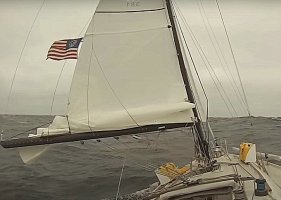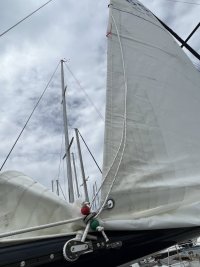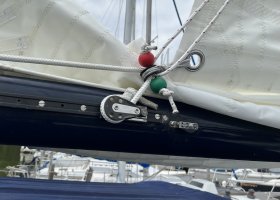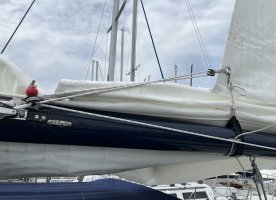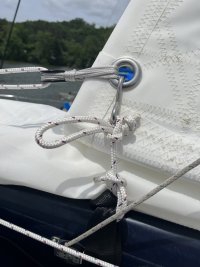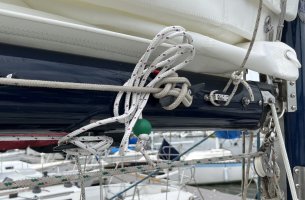I've been working on this goal, which greatly improves confidence. Slab reefing is speedy, but requires a bit of attention to gear.
What has helped me most is changing to lighter reef lines (down from Ericson-recommended 3/8th inch for the E38). Smaller goes through the blocks and clutches easier.
Using bowline loops* on the boom, rather than the sliding cheek blocks on many Kenyon booms.
Tides mast track for easy halyard adjustment under load.
Clutches to free up winches.
"Dogbones" on reefing tacks.
Downhauls on the dogbones. They allow all reefing to be done from the cockpit, but may require additional deck organizer.
Discipline for the lazyjack issue. It is necessary to coax the full-length battens up, which means letting the mainsail fully luff and timing the hoist.
Can you reef without altering course? Including dead downwind? Downhauls really help.
Can you reef alone, without asking for help, or causing concern to guests?
*The bowlines on the reef lines are made on the standing part of the line, not around the boom. That helps them stay in place. A loose loop around the boom tends to flog itself out of position, but a bowline on the standing part cinches tight.
What has helped me most is changing to lighter reef lines (down from Ericson-recommended 3/8th inch for the E38). Smaller goes through the blocks and clutches easier.
Using bowline loops* on the boom, rather than the sliding cheek blocks on many Kenyon booms.
Tides mast track for easy halyard adjustment under load.
Clutches to free up winches.
"Dogbones" on reefing tacks.
Downhauls on the dogbones. They allow all reefing to be done from the cockpit, but may require additional deck organizer.
Discipline for the lazyjack issue. It is necessary to coax the full-length battens up, which means letting the mainsail fully luff and timing the hoist.
Can you reef without altering course? Including dead downwind? Downhauls really help.
Can you reef alone, without asking for help, or causing concern to guests?
*The bowlines on the reef lines are made on the standing part of the line, not around the boom. That helps them stay in place. A loose loop around the boom tends to flog itself out of position, but a bowline on the standing part cinches tight.

